Young Bess

Brief Synopsis
Cast & Crew
George Sidney
Jean Simmons
Deborah Kerr
Charles Laughton
Kay Walsh
Guy Rolfe
Film Details
Technical Specs

Synopsis
At Hatfield House in England, in 1558, royal governess Mrs. Ashley tells steward Mr. Parry that word has come from London that their mistress Elizabeth's half-sister, Queen Mary, is on her deathbed. Ecstatic at the prospect of "Young Bess" inheriting the throne, the servants share a celebratory drink and recall Elizabeth's childhood: King Henry VIII and his wife, Anne Boleyn, present their infant daughter Elizabeth to the court. When Anne is executed for infidelity three years later, Elizabeth loses her claim to the throne and is sent to live in Hatfield with Mrs. Ashley. The young princess is brought back to court to meet Henry's fourth and fifth wives, but returns to Hatfield when these marriages end. Years pass, and dashing Lord Admiral Thomas Seymour arrives at Hatfield one day to bring Elizabeth, now a headstrong young woman, back to court. At the palace, Elizabeth meets the gracious Catherine Parr, Henry's sixth wife, and is immediately won over by her warmth. Elizabeth also is reunited with her younger half-brother Edward, who speculates that Catherine may not last long because of her outspoken ways. One day, on one of Thomas' ships, Henry accuses Catherine of heresy when he learns that she authorized an English translation of the Bible. Elizabeth comes to her stepmother's defense, and Henry is impressed by her spirit and likeness to him. The king soon falls ill, and on his deathbed warns Thomas to be on guard against Thomas' cold, ambitious brother Ned. Henry dies, and Elizabeth realizes that she is in love with Thomas. Young Edward is crowned king and placed under the guardianship of Ned, who has been named Lord Protector of the Realm, and his wife Ann. When Ann accuses Elizabeth of having behaved inappropriately with Thomas, the princess hurls an inkwell at her and is ordered to return to Hatfield. Thomas instead has Elizabeth and Catherine moved to Chelsea, to Ned's annoyance. Elizabeth confesses her feelings for Thomas to Mrs. Ashley, who replies that he is in love with another woman. Elizabeth vehemently denies this, but late one night, she hears a horse approach and from her window sees Thomas and Catherine embrace. Mrs. Ashley gently tells the crestfallen Elizabeth that Thomas and Catherine were secretly engaged before Henry decided to take Catherine for his wife, and that Ned would never permit his brother to marry into the royal family. Elizabeth goes to see Edward, who complains of Ned and Ann's oppressive control over him. Elizabeth urges Edward to stand up for himself, and gives him the idea of authorizing a marriage between Catherine and Thomas. Edward commands the lovers to marry, and gives Thomas more ships. After a successful campaign against pirates, Thomas' popularity soars, arousing Ned's jealousy. One day, Thomas takes Elizabeth sailing, and she impresses him with her nautical knowledge and her dreams of global supremacy for England. Elizabeth's unrequited love for Thomas continues to torture her, and she agrees to Ned's request that she consider marriage to a Danish prince. At a banquet for the Danish envoy, Elizabeth slips away and kisses Edward's infatuated valet, Barnaby Fitzpatrick, hoping that Thomas will discover them. They are instead seen by the Danish envoy, who departs at once. Thomas is furious with Elizabeth, but they kiss and she declares her love for him. The following day, Catherine confronts Elizabeth, having divined the young woman's feelings, and Elizabeth agrees it is best that she return to Hatfield. Catherine soon becomes ill and dies. A year later, Elizabeth appears at court during Edward's birthday celebration. Edward privately tells Elizabeth that Ned has intercepted Thomas' letters to her, and warns that Thomas' life is in danger. When she returns to Hatfield, Elizabeth learns that Parry and Mrs. Ashley have been taken to London for questioning. Thomas comes to Elizabeth in the middle of the night, and they talk together until dawn. Later, Elizabeth is summoned by Ned, who informs her that Thomas has been arrested and taken to the Tower. Ned accuses her of conspiring with Thomas to commit treason, but Elizabeth defiantly accuses Ned of plotting to kill his brother and vows to enlist Edward's support. Thomas is executed before Edward can intervene, however, and Elizabeth comforts the weeping young king. Back in the present, Mrs. Ashley tells Parry that she has dressed specially in anticipation of Elizabeth's becoming queen, explaining that she wore the same gown to Edward's funeral and Ned's execution. As the crowds outside cheer and her servants look on with pride, a poised Elizabeth steps out on the balcony to greet her subjects.

Director
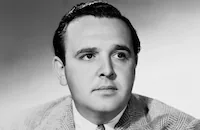
George Sidney
Cast

Jean Simmons

Deborah Kerr
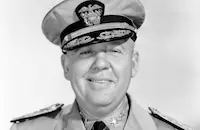
Charles Laughton
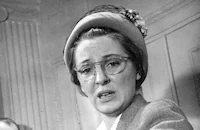
Kay Walsh

Guy Rolfe

Kathleen Byron

Cecil Kellaway
Rex Thompson

Robert Arthur

Leo G. Carroll
Norma Varden

Alan Napier
Noreen Corcoran
Ivan Triesault

Elaine Stewart
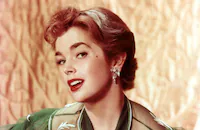
Dawn Addams
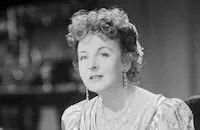
Doris Lloyd
Lumsden Hare
Lester Matthews
Patrick Whyte
Frank Eldridge
John Sheffield
Guy Kingsford
Ann Tyrrell
Carl Saxe
John Rice
Major Sam Harris
Raymond Lawrence
David Cavendish
Eric Wilton
Norman Rainey
Carol Savage
Jean Fenwick
Charles Keane
Clive Morgan
Al Ferguson
David Bair

Ian Wolfe
Robert Shafto
Jack Raine
Reginald Sheffield
John Trueman
Ernest Newton
Fay Wall
Crew
Alvord Eiseman
Sidney Franklin
Cedric Gibbons
A. Arnold Gillespie
Sydney Guilaroff
Henri Jaffa
Jan Lustig
Urie Mccleary
Jack D. Moore
Warren Newcombe
Walter Plunkett
George Rhein
Charles Rosher
Miklos Rozsa
Robert Saunders
Douglas Shearer
William Tuttle
Edwin B. Willis
Arthur Wimperis
Ralph E. Winters
Edward Woehler

Videos
Movie Clip



Trailer
Hosted Intro
Film Details
Technical Specs

Award Nominations
Best Art Direction
Best Costume Design
Articles
Young Bess
Based on a book by Margaret Irwin, the story of Young Bess plays it a little loose with the facts, but to good dramatic effect. For example, in Young Bess Elizabeth (Jean Simmons) is in love with Thomas Seymour (Stewart Granger), but sacrifices her feelings by making Seymour marry her stepmother Catherine Parr. But according to the history books, Catherine was already married to Seymour before Elizabeth knew him. And though the exact nature of Elizabeth and Seymour's relationship remains unclear, Seymour did indeed propose to Elizabeth after Catherine died. She, however, declined the offer, and upon his death, the future queen was reported to have commented, "Today died a man of much wit and very little judgment." Not quite the star-crossed love story that is depicted in Young Bess.
All of Hollywood's royalty, from Elizabeth Taylor to Deborah Kerr, were considered for the role of Young Bess before Jean Simmons won the part. Deborah Kerr graciously agreed to take the supporting role of stepmother Catherine Parr. Charles Laughton, who had previously played Henry VIII in The Private Life of Henry VIII (1933), appears once again as the much troubled monarch. And Simmon's real life husband, Stewart Granger, plays love interest Seymour.
Granger (whose real name was James Stewart) and Simmons met in 1946 while working on the picture Caesar and Cleopatra. They would meet again over a year later, with Simmons now a grown up eighteen. Granger soon became Jean's advisor, at one point counseling her not to take the role of Ophelia in Hamlet (1948), opposite Laurence Olivier, for fear of being typecast. Needless to say, Simmons didn't always listen to Granger's advice. She went on to receive an Oscar nomination for the part.
The relationship soon turned to romance, and the couple appeared in a film together in 1949 that reflected their own situation. In Adam and Evelyne Granger plays a man in love with a younger woman. A few years later, after divorcing his first wife, Granger and Jean married on December 20, 1950. He was 27. The bride was 21.
Simmons said of her scenes with Granger in Young Bess, "I feel more self-conscious about playing love scenes with him now, than I did before we were man and wife." But the chemistry flourished on screen. And the young queen and her dashing Seymour live on as a royal romance for the ages.
Producer: Sidney A. Franklin
Director: George Sidney
Screenplay: Jan Lustig, Arthur Wimperis
Production Design: Cedric Gibbons, Urie McCleary
Cinematography: Charles Rosher
Costume Design: Walter Plunkett
Film Editing: Ralph Winters
Original Music: Miklos Rozsa
Principal Cast: Jean Simmons (Young Bess), Stewart Granger (Thomas Seymour), Deborah Kerr (Catherine Parr), Charles Laughton (King Henry VIII), Kay Walsh (Mrs. Ashley), Guy Rolfe (Ned Seymour), Cecil Kellaway (Mr. Parry), Leo G. Carroll (Mr. Mums).
C-113m. Closed captioning
by Stephanie Thames

Young Bess
Quotes
If you were queen of England, what would you do, eh? Would you give your admiral the opportunity to do great deeds?- Thomas Seymour
I'd give him the opportunities he never dared dream about. I'd send him around the globe as the Portuguese do. I'd send him to the New World to let the Spaniards know that they are no longer masters of it.- Queen Elizabeth I
That won't be easy. We're a small country, Bess.- Thomas Seymour
That can be remedied, Tom. It CAN be remedied!- Queen Elizabeth I
Trivia
Notes
In the onscreen prologue and closing credits, Anne Boleyn's name is misspelled as "Ann." November 1952 Hollywood Reporter news items reveal that Mara Corday was originally cast as Boleyn. According to a June 7, 1953 New York Times article, M-G-M purchased the film rights to Margaret Irwin's book in 1945, but production was delayed because of difficulties in casting the title role, for which both Greer Garson and Deborah Kerr were considered. A August 24, 1952 New York Times news item states that Katherine Anne Porter and credited writer January Lustig prepared a screenplay in 1945. A modern source also credits Porter with having worked on the screenplay, but the extent of her contribution to the final film has not been determined. Charles Laughton, who portrayed King Henry VIII in Young Bess, had previously portrayed the monarch in the 1933 film The Private Life of Henry VIII (see AFI Catalog of Feature Films, 1931-40), a performance that earned him an Academy Award. According to a December 31, 1952 Hollywood Reporter news item, director George Sidney planned to use twenty-five English actors when looping the film to add authenticity.
Elizabeth I (1533-1603) ruled as queen of England and Ireland from 1558 until her death, and was the last of the Tudor rulers. Admiral Thomas Seymour was the brother of Jane Seymour, Henry VIII's third wife and mother of Prince Edward. Seymour married Henry's sixth wife, Catherine Parr, after the king's death. Parr died in 1548, shortly after giving birth, and Seymour was executed for high treason six months later. Although the extent of their romantic relationship is not known, modern historians agree that Elizabeth and Seymour did carry on a flirtation that caused friction in Seymour's marriage.
According to an May 8, 1953 Hollywood Reporter news item, M-G-M's Empire Theatre in London was installing the city's first panoramic screen for the run of Young Bess. The slightly curved screen had an aluminized surface and was intended to "give panoramic dimensions to normal-sized prints." Contemporary news items add that the film had a charity premiere in Brighton, England, as part of the festivities surrounding the coronation of Queen Elizabeth II on June 2, 1953. Young Bess received Academy Award nominations for Best Costume Design (Color) and Best Art Direction (Color). Jean Simmons and Stewart Granger, who portrayed Elizabeth and Seymour, were married at the time the film was made.
Elizabeth I's life has served as the inspiration for many other biographical films, including the 1939 film The Private Lives of Elizabeth and Essex, directed by Michael Curtiz, with Bette Davis and Errol Flynn (see AFI Catalog of Feature Films, 1931-40); the 1955 film The Virgin Queen, directed by Henry Koster, which also starred Bette Davis as Elizabeth and featured Richard Todd and Joan Collins; and the 1998 film Elizabeth, directed by Shekhar Kapur, in which Cate Blanchett appeared in the title role. The queen's life was also the subject of a 1968 NBC television special, Elizabeth the Queen, starring Judith Anderson and Charlton Heston, and an acclaimed 1971 BBC mini-series, Elizabeth R, starring Glenda Jackson. A number of films have incorporated Elizabeth as a minor character, and in 1998, Dame Judi Dench won an Academy Award for Best Supporting Actress for her portrayal of the queen in Shakespeare in Love.
















